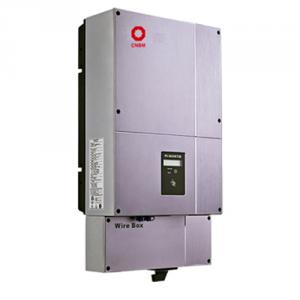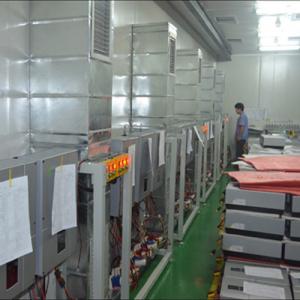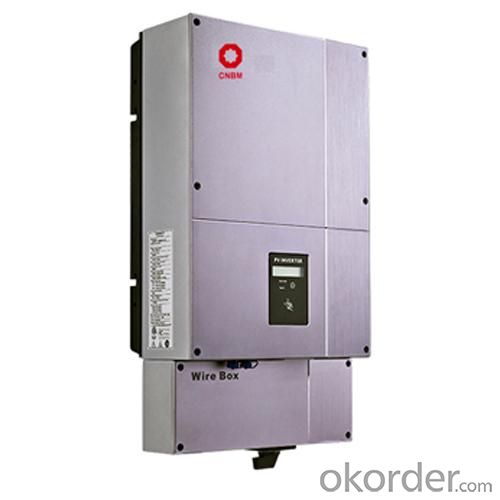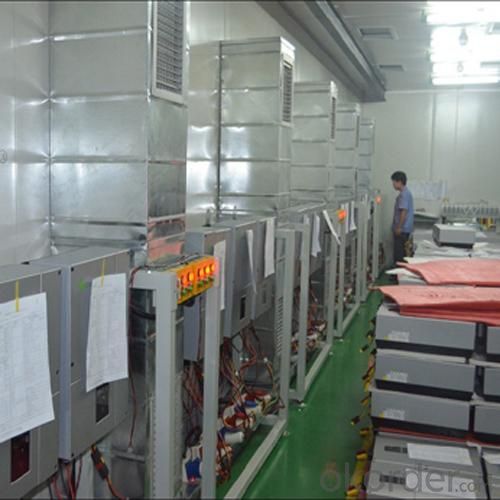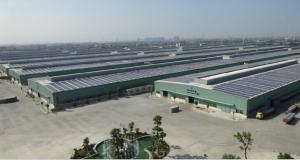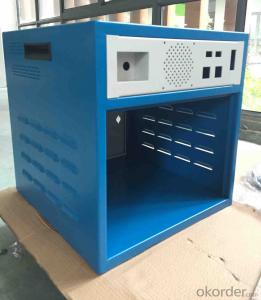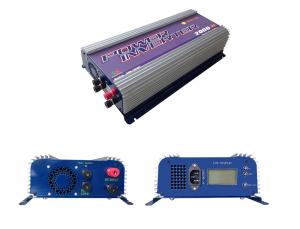100 Kw Grid Connected Solar Inverter 1500W
- Loading Port:
- Shenzhen
- Payment Terms:
- TT or L/C
- Min Order Qty:
- 1 pc
- Supply Capability:
- 3000 sets Per Month pc/month
OKorder Service Pledge
OKorder Financial Service
You Might Also Like
Introduction of Grid Connected Solar Inverter 1500W
CNBM International Corporation (CNBM International) is the most important trading platform of CNBM Group
Corporation, a state-owned company under the direct supervision of State-owned Assets Supervision and Administration
Commission of the State Council. The Grid Connected Solar Inverter we can offer is single-phase
1.5kw-5kw 1&2 MPPT; three-phase 10kw to 20kw 2MPPT inverters. Good quality and good services.
Advantages of Grid Connected Solar Inverter 1500W
Maximum efficiency of 97.5% and wide input voltage range
Integrated DC switch-disconnected
MTL-String
Sound control
Bluetooth/RF technology /Wi-Fi
Transformerless GT topology
5 years warranty (10 years as optional)
Datasheet of Grid Connected Solar Inverter 1500W
Model | CNBM-1500-US | CNBM-2000-US | CNBM-3000-US |
Input data |
| ||
Max. DC power | 1800W | 2300W | 3200W |
Max. DC voltage | 450V | 500V | 500V |
Start voltage | 150V | 150V | 150V |
PV voltage range | 100V-450V | 100V-500V | 100V-500V |
Number of MPP trackers/strings per MPP tracker | 1/1 | 1/2 | 1/2 |
Max. input current of the MPP tracker | 12A | 14A | 17A |
Output data |
| ||
Nominal AC output power | 1500W@208Vac 1650W@240&277Vac | 1800W@208Vac 2000W@240&277Vac | 2500W@208Vac 2800W@240&277Vac |
Max. output current | 8A/7.8A/6.8A | 9.7A/9.4A/8.2A | 15A/14.2A/12.3A |
AC nominal voltage; range | Default:240V single phase optional:208,240or277 single phase 183-228@208V 211-264V@240V 244-305@277V | ||
AC grid frequency; range | 60Hz;59.3-60.5Hz | 60Hz;59.3-60.5Hz | 60Hz;59.3-60.5Hz |
Phase shift (cosφ) | 1 | 1 | 1 |
THDI | <3% | <3% | <3% |
AC connection | Single phase | Single phase | Single phase |
Efficiency |
| ||
Max. efficiency | 97% | 97% | 97% |
CEC efficiency | 96% | 96.50% | 96.50% |
MPPT efficiency | 99.50% | 99.50% | 99.50% |
Protection devices |
| ||
Output overvoltage protection-varistor | yes | yes | yes |
Ground fault monitoring | yes | yes | yes |
Grid monitoring | yes | yes | yes |
General Data |
| ||
Dimensions (W / H / D) in mm | 360/465/165 | 360/465/165 | 360/465/165 |
Weight | 14.6KG | 15.1KG | 15.9KG |
Operating temperature range | -25...+60°C | -25...+60°C | -25...+60°C |
Altitude | Up to 2000m(6560ft) without power derating | ||
Consumption: operating(standby) / night | <5W / < 0.5 W | <5W / < 0.5 W | <5 W / < 0.5 W |
Topology | Transformerless | ||
Cooling concept | Natural | Natural | Natural |
Enclosure | Type 3R | Type 3R | Type 3R |
Features |
| ||
DC connection: | Screw terminal | Screw terminal | Screw terminal |
AC connection: | Screw terminal | Screw terminal | Screw terminal |
display | LCD | LCD | LCD |
Interfaces: RS485/RS232/Bluetooth/RF/Zigbee | yes/yes/opt/opt/opt | ||
Warranty: 5 years/ 10 years / 15 years | yes /opt | yes /opt | yes /opt |
Certificates and approvals | UL1741,UL1998 IEEE 1547, CSA C22.2 No.107.1-1,FCC Part15(Class A&B) | ||
Picture 1: Factory of Grid Connected Solar Inverter 1500W factory
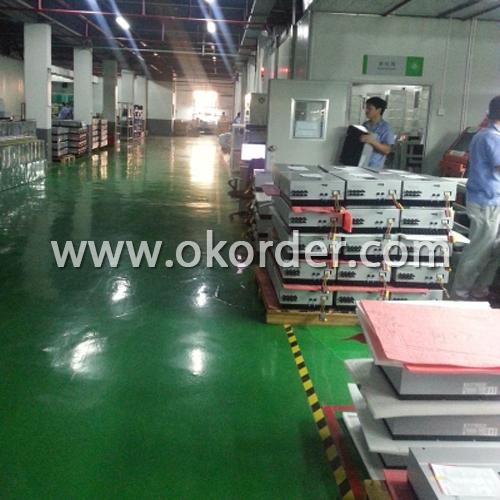
Picture 2: Package of Grid Connected Solar Inverter 1500W

- Q: Can a solar inverter be connected to the grid?
- Yes, a solar inverter can be connected to the grid. In fact, connecting a solar inverter to the grid is a common practice in solar energy systems. The inverter is responsible for converting the direct current (DC) produced by the solar panels into alternating current (AC) that can be used by homes or businesses or fed back into the electrical grid. This allows solar energy systems to generate electricity for consumption while also contributing excess power to the grid.
- Q: What is the importance of surge protection in a solar inverter?
- Surge protection is of utmost importance in a solar inverter due to several reasons. Firstly, solar inverters are responsible for converting the direct current (DC) generated by solar panels into alternating current (AC) that can be used to power electrical devices. During this conversion process, there is a potential for power surges or voltage spikes to occur. These surges can damage the sensitive electronic components within the inverter, leading to malfunctions or complete failure. Secondly, solar inverters are often connected to the electrical grid, allowing excess electricity generated by the solar panels to be fed back into the grid. However, the grid can be prone to power fluctuations and surges caused by lightning strikes, utility switching, or other external factors. Without adequate surge protection, these power surges can travel back through the grid and damage the solar inverter. Furthermore, surge protection is essential in safeguarding the entire solar power system. In addition to the solar inverter, there are other components such as charge controllers, battery systems, and monitoring equipment that are interconnected. A surge in any part of the system can potentially damage or disrupt the entire system's operation. By installing surge protection devices, such as surge suppressors or surge arresters, in the solar inverter, the excess energy from power surges is diverted away from the sensitive electronic components. These devices are designed to absorb or redirect the surge, protecting the inverter and other connected equipment. In conclusion, surge protection is crucial in a solar inverter to prevent damage from power surges during the conversion process, protect against external power fluctuations from the grid, and safeguard the entire solar power system. Investing in proper surge protection ensures the longevity and reliable operation of the solar inverter, minimizing the risk of costly repairs or replacements.
- Q: Can a solar inverter be used with solar trackers?
- Yes, a solar inverter can be used with solar trackers. Solar trackers are used to maximize the efficiency of solar panels by orienting them towards the sun. Solar inverters are responsible for converting the DC power generated by solar panels into usable AC power. Both components work together to optimize solar energy production.
- Q: How the output voltage of the PV inverter and the grid-connected voltage are determined
- DC voltage and AC side voltage does not matter, the general PV inverter AC output is 400V / N / PE. With no isolation transformer and output voltage does not matter, grid-connected inverter is the regulation of current, and network voltage depends on the grid voltage. And the grid before the inverter will detect the grid voltage, meet the conditions will be network.
- Q: Can a solar inverter be used with different solar panel technologies?
- Yes, a solar inverter can be used with different solar panel technologies as long as the inverter is compatible with the specific voltage and power output of the panels. However, it is important to ensure that the inverter is designed to handle the specific characteristics and requirements of each solar panel technology for optimal performance and efficiency.
- Q: What are the potential risks of overvoltage in a solar inverter?
- The potential risks of overvoltage in a solar inverter include damage to the inverter itself, as well as other connected electrical equipment. It can lead to overheating, arcing, and even electrical fires. Additionally, overvoltage can cause a significant decrease in the lifespan and efficiency of solar panels, reducing their overall performance. It is crucial to have proper protective measures in place, such as surge protectors and voltage regulators, to mitigate these risks.
- Q: Can a solar inverter be used in a hybrid solar system?
- Yes, a solar inverter can be used in a hybrid solar system. A hybrid solar system combines both solar energy and another source of energy, such as a battery or grid power. The solar inverter is responsible for converting the DC (direct current) power generated by the solar panels into AC (alternating current) power that can be used to power the electrical devices in a home or business. In a hybrid solar system, the solar inverter can still perform this function, allowing the system to utilize solar energy while also being able to draw power from other sources when needed.
- Q: Can a solar inverter be used in low light conditions?
- Yes, a solar inverter can be used in low light conditions. However, the efficiency of the solar inverter decreases as the amount of available sunlight decreases. Therefore, it may not be as effective in converting solar energy into usable electricity in comparison to bright sunny conditions.
- Q: Can a solar inverter be used with a solar-powered remote sensing system?
- Yes, a solar inverter can be used with a solar-powered remote sensing system. The solar inverter is responsible for converting the direct current (DC) generated by the solar panels into alternating current (AC) that can be used to power the remote sensing system. This allows for the efficient and reliable operation of the remote sensing system using solar energy as the primary power source.
- Q: Can a solar inverter be used with a solar-powered electric vehicle charging station?
- Yes, a solar inverter can be used with a solar-powered electric vehicle charging station. The solar inverter helps convert the direct current (DC) power produced by the solar panels into alternating current (AC) power that can be used to charge electric vehicles. This allows for efficient and sustainable charging of electric vehicles using solar energy.
Send your message to us
100 Kw Grid Connected Solar Inverter 1500W
- Loading Port:
- Shenzhen
- Payment Terms:
- TT or L/C
- Min Order Qty:
- 1 pc
- Supply Capability:
- 3000 sets Per Month pc/month
OKorder Service Pledge
OKorder Financial Service
Similar products
Hot products
Hot Searches
Related keywords

